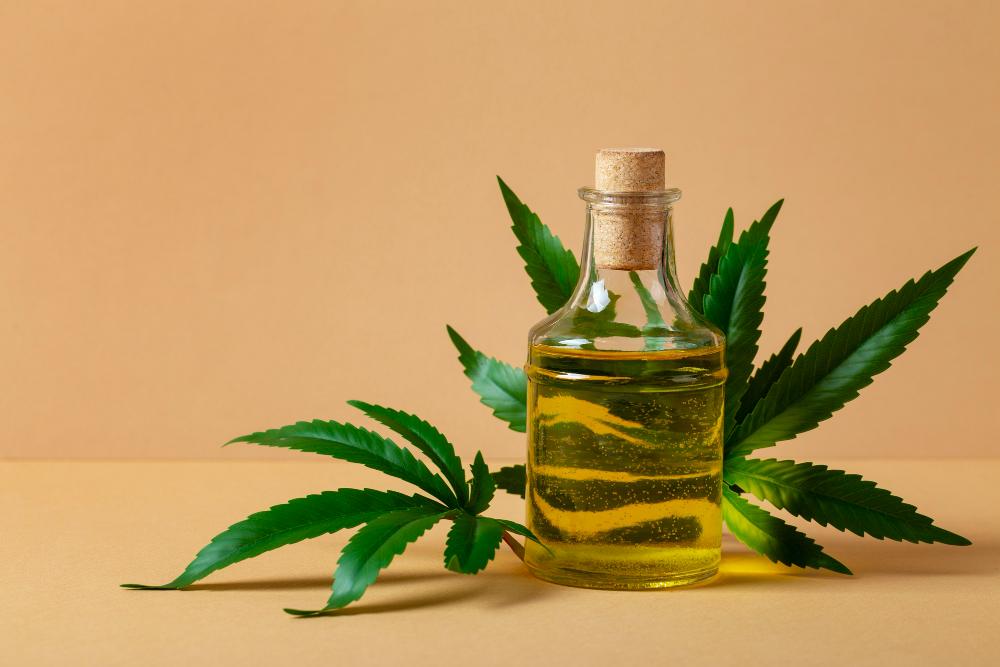I. Introduction to the Bioprocess Containers Market
Bioprocess containers play a pivotal role in the biopharmaceutical industry, offering a convenient and efficient means of handling, storing, and transporting biological materials such as cell cultures, vaccines, and biopharmaceutical products. These containers are designed for single-use applications, addressing concerns related to contamination, cross-contamination, and cleaning validation associated with traditional stainless steel bioreactors and storage vessels.
A. Definition and Scope
The term “bioprocess containers” refers to flexible containers, bags, and pouches specifically designed for use in bioprocessing applications. These containers are typically made from high-quality, biocompatible materials such as polyethylene, polypropylene, and fluoropolymers to ensure compatibility with a wide range of biopharmaceutical products.
B. Significance of Bioprocess Containers in Biopharmaceutical Industry
In recent years, the biopharmaceutical industry has witnessed a significant shift towards the adoption of single-use technologies, driven by the need for increased flexibility, reduced operational costs, and enhanced process efficiency. Bioprocess containers offer several advantages over traditional stainless steel systems, including rapid turnaround times, reduced risk of product contamination, and simplified cleaning and sterilization procedures.
C. Market Overview and Growth Potential
The global bioprocess containers market has experienced substantial growth in recent years, fueled by the growing demand for biopharmaceutical products, advancements in bioprocessing technologies, and increasing regulatory scrutiny. According to recent market research reports, the market size for bioprocess containers was valued at USD 4.72 billion in 2023, with a projected compound annual growth rate (CAGR) of 21.03% during the forecast period of 2024-2032. This robust growth trajectory can be attributed to factors such as the expanding biopharmaceutical pipeline, rising investments in biomanufacturing infrastructure, and the emergence of new bioprocessing modalities.
II. Factors Driving Growth in the Bioprocess Containers Market
A. Increasing Awareness about Single-Use Technologies
One of the primary drivers of growth in the bioprocess containers market is the growing awareness among biopharmaceutical manufacturers about the benefits of single-use technologies. Single-use bioprocess systems offer numerous advantages, including reduced risk of cross-contamination, enhanced operational flexibility, and lower capital investment compared to traditional stainless steel systems. As a result, biopharmaceutical companies are increasingly adopting single-use bioprocessing solutions to streamline their operations, accelerate time-to-market, and minimize production costs.
B. Advantages of Bioprocess Containers over Traditional Methods
Bioprocess containers offer several distinct advantages over traditional stainless steel bioreactors and storage vessels. Unlike stainless steel systems, which require complex cleaning and sterilization procedures between batches, bioprocess containers are designed for single-use applications, eliminating the need for cleaning validation and minimizing the risk of product contamination. Additionally, bioprocess containers are highly customizable and can be tailored to meet the specific requirements of different biopharmaceutical processes, enabling greater process flexibility and scalability.
C. Rise in Biopharmaceutical R&D Activities
The biopharmaceutical industry has witnessed a surge in research and development (R&D) activities in recent years, driven by advancements in biotechnology, increased investment in drug discovery and development, and the growing demand for innovative therapeutics. As biopharmaceutical companies continue to expand their product pipelines and explore new treatment modalities, the demand for bioprocess containers is expected to rise significantly, providing lucrative opportunities for market players.
D. Stringent Regulations and Quality Standards
Regulatory agencies, such as the U.S. Food and Drug Administration (FDA) and the European Medicines Agency (EMA), have established stringent regulations and quality standards governing the manufacturing, storage, and transportation of biopharmaceutical products. Bioprocess containers must comply with these regulatory requirements to ensure product safety, efficacy, and quality. As a result, bioprocess container manufacturers are required to adhere to Good Manufacturing Practices (GMP) and implement robust quality management systems to maintain regulatory compliance and meet the evolving needs of the biopharmaceutical industry.
II. Market Size and Forecast
A. Forecasted Growth Rate: 21.03% CAGR
The bioprocess containers market is projected to grow at a compound annual growth rate (CAGR) of 21.03% during the forecast period of 2024-2032. This robust growth can be attributed to several key factors, including the increasing adoption of single-use technologies, expanding biopharmaceutical pipeline, and rising demand for biomanufacturing solutions.
B. Projected Market Size by 2032: USD 45.70 billion
By the end of the forecast period in 2032, the global bioprocess containers market is expected to reach a value of USD 45.70 billion, driven by sustained investments in bioprocessing infrastructure, advancements in bioprocess technology, and the growing prevalence of biopharmaceutical products worldwide. This exponential growth trajectory underscores the significant opportunities available to market players operating in the bioprocess containers segment.
C. Factors Influencing Market Growth
Several factors are expected to contribute to the continued growth and expansion of the bioprocess containers market in the coming years. These include:
- Technological Advancements: Ongoing innovations in bioprocess container design, materials science, and manufacturing processes are expected to enhance the performance, functionality, and reliability of bioprocess containers, driving increased adoption across diverse biopharmaceutical applications.
- Shift towards Single-Use Solutions: Biopharmaceutical manufacturers are increasingly recognizing the operational and economic benefits of single-use bioprocessing solutions, including reduced capital investment, enhanced operational flexibility, and improved process efficiency. As a result, the demand for bioprocess containers is expected to escalate, particularly in emerging markets and niche therapeutic areas.
- Expansion of Biopharmaceutical Pipeline: The growing prevalence of chronic diseases, aging populations, and unmet medical needs are driving significant investments in biopharmaceutical R&D. As biopharmaceutical companies continue to expand their product pipelines and develop novel therapeutics, the demand for bioprocess containers is poised to increase, creating lucrative growth opportunities for market participants.
- Strategic Collaborations and Partnerships: Collaboration between biopharmaceutical manufacturers, contract development and manufacturing organizations (CDMOs), and bioprocess container suppliers is expected to accelerate innovation, facilitate technology transfer, and drive market growth. Strategic partnerships can also enable companies to leverage complementary capabilities, expand their geographic footprint, and capitalize on emerging market trends.
IV. Competitor Landscape
The bioprocess containers market is characterized by intense competition and a diverse array of market participants, including established industry players, niche suppliers, and emerging startups. Key players in the bioprocess containers market include:
A. Thermo Fisher Scientific Inc.
Thermo Fisher Scientific Inc. is a leading global provider of scientific instruments, reagents, consumables, and laboratory equipment for the life sciences industry. The company offers a comprehensive portfolio of bioprocess containers, including single-use bags, mixing systems, and filtration solutions, designed to meet the evolving needs of biopharmaceutical manufacturers.
- Company Overview: Thermo Fisher Scientific Inc. operates a broad portfolio of businesses spanning laboratory equipment, analytical instruments, and specialty diagnostics. With a global presence and extensive R&D capabilities, the company is well-positioned to address the diverse requirements of the biopharmaceutical industry.
- Product Portfolio: Thermo Fisher Scientific Inc. offers a wide range of bioprocess containers tailored to various biopharmaceutical applications, including cell culture, fermentation, and downstream processing. The company’s product portfolio encompasses scalable single-use systems, sterile fluid transfer assemblies, and customizable solutions designed to optimize bioprocessing workflows and enhance productivity.
- Market Presence and Strategies: Thermo Fisher Scientific Inc. has established a strong foothold in the bioprocess containers market through strategic acquisitions, product innovation, and customer-centric solutions. The company’s commitment to quality, reliability, and customer satisfaction has earned it a reputation as a trusted partner among biopharmaceutical manufacturers worldwide.
B. Cytiva Europe GmbH.
Cytiva Europe GmbH., formerly known as GE Healthcare Life Sciences, is a leading provider of bioprocess solutions, chromatography systems, and cell culture technologies for the biopharmaceutical industry. The company offers a diverse portfolio of bioprocess containers and disposable bioreactors designed to streamline biomanufacturing operations and accelerate the production of biopharmaceuticals.
- Company Overview: Cytiva Europe GmbH. is a subsidiary of Cytiva, a global leader in life sciences research and bioprocessing solutions. With a rich heritage of innovation and a commitment to advancing healthcare, the company leverages its extensive expertise in bioprocessing and biomanufacturing to develop cutting-edge solutions that address the evolving needs of the biopharmaceutical industry.
- Product Portfolio: Cytiva Europe GmbH. offers a comprehensive range of bioprocess containers, single-use bioreactors, and disposable filtration systems designed to optimize biopharmaceutical production processes. The company’s product portfolio includes scalable bioprocess solutions, modular platform technologies, and integrated workflows that enable efficient and cost-effective biomanufacturing at scale.
- Market Presence and Strategies: Cytiva Europe GmbH. maintains a strong presence in the bioprocess containers market through strategic collaborations, customer partnerships, and continuous investment in research and development. The company’s focus on innovation, quality, and sustainability has positioned it as a preferred supplier of bioprocessing solutions among biopharmaceutical manufacturers worldwide.
C. Saint-Gobain Group
The Saint-Gobain Group is a global leader in the design, manufacturing, and distribution of high-performance materials and solutions for various industries, including healthcare, construction, and transportation. The company offers a diverse portfolio of bioprocess containers, fluid handling systems, and sterile packaging solutions designed to meet the stringent requirements of the biopharmaceutical industry.
- Company Overview: The Saint-Gobain Group operates a broad portfolio of businesses encompassing innovative materials, sustainable technologies, and advanced manufacturing processes. With a legacy of excellence spanning centuries, the company is renowned for its commitment to quality, integrity, and customer satisfaction.
- Product Portfolio: The Saint-Gobain Group offers a comprehensive range of bioprocess containers, flexible tubing, and sterile connectors engineered to meet the critical needs of biopharmaceutical manufacturers. The company’s product portfolio includes advanced materials, proprietary technologies, and customizable solutions that enable safe and efficient bioprocessing across a wide range of applications.
- Market Presence and Strategies: The Saint-Gobain Group maintains a strong presence in the bioprocess containers market through its global network of manufacturing facilities, distribution channels, and strategic partnerships. The company’s dedication to innovation, sustainability, and operational excellence has positioned it as a trusted partner and preferred supplier among biopharmaceutical manufacturers worldwide.
D. Competitive Analysis and Market Positioning
The bioprocess containers market is highly competitive, with key players vying for market share through product differentiation, strategic alliances, and customer-centric solutions. Competitor analysis and market positioning are essential for companies seeking to gain a competitive edge and capitalize on emerging market trends. Factors such as product quality, reliability, pricing, and customer support play a critical role in determining market positioning and long-term success in the bioprocess containers segment.
V. Regional Analysis
The bioprocess containers market exhibits regional variations in terms of market dynamics, regulatory landscape, and adoption of single-use technologies. A comprehensive regional analysis provides valuable insights into market trends, growth opportunities, and competitive dynamics across different geographical regions.
A. North America
North America represents a significant market for bioprocess containers, driven by the presence of a robust biopharmaceutical industry, favorable regulatory environment, and high adoption rates of single-use technologies. The region is home to several leading biopharmaceutical companies, contract manufacturing organizations (CMOs), and research institutions, driving demand for bioprocess containers for biomanufacturing, cell culture, and downstream processing applications. Regulatory agencies such as the FDA play a crucial role in shaping the regulatory landscape and setting quality standards for bioprocess containers, ensuring product safety, efficacy, and compliance with Good Manufacturing Practices (GMP).
B. Europe
Europe is a key market for bioprocess containers, characterized by a strong emphasis on innovation, sustainability, and quality assurance. The region boasts a well-established biopharmaceutical industry, supported by robust infrastructure, skilled workforce, and advanced manufacturing capabilities. European regulatory authorities, including the European Medicines Agency (EMA), set stringent requirements for bioprocess containers, ensuring adherence to European Union (EU) regulations and directives. Market players in Europe focus on product innovation, customization, and strategic partnerships to meet the evolving needs of biopharmaceutical manufacturers and maintain a competitive edge in the global market.
C. Asia-Pacific
The Asia-Pacific region is witnessing rapid growth in the bioprocess containers market, driven by increasing investments in biopharmaceutical R&D, expanding biomanufacturing capacity, and rising demand for novel therapeutics. Countries such as China, India, and Singapore are emerging as key hubs for biopharmaceutical production, fueled by government initiatives, favorable investment policies, and growing collaborations with multinational pharmaceutical companies. Market players in the Asia-Pacific region focus on cost-effective solutions, scalability, and localization to address the unique requirements of diverse biopharmaceutical markets and capitalize on growth opportunities in the region.
D. Latin America
Latin America presents significant growth opportunities for the bioprocess containers market, driven by the increasing prevalence of chronic diseases, expanding healthcare infrastructure, and growing investments in biotechnology and life sciences. Countries such as Brazil, Mexico, and Argentina are witnessing a surge in biopharmaceutical R&D activities, supported by government incentives, academic partnerships, and industry collaborations. Market players in Latin America focus on market penetration, product affordability, and regulatory compliance to capitalize on the region’s burgeoning biopharmaceutical sector and establish a strong foothold in key markets.
E. Middle East & Africa
The Middle East & Africa region is experiencing steady growth in the bioprocess containers market, driven by rising healthcare expenditure, increasing adoption of biotechnology, and growing investment in healthcare infrastructure. Countries such as Saudi Arabia, South Africa, and the United Arab Emirates are investing in biopharmaceutical manufacturing facilities, research centers, and innovation hubs to enhance their competitiveness in the global biopharmaceutical market. Market players in the Middle East & Africa focus on strategic partnerships, technology transfer, and capacity building to support the region’s growing biopharmaceutical sector and address unmet medical needs.
VI. Emerging Trends and Opportunities
The bioprocess containers market is characterized by several emerging trends and opportunities that are reshaping the landscape of biopharmaceutical manufacturing and driving innovation in single-use technologies. Understanding these trends is essential for market players to identify growth opportunities, anticipate market dynamics, and stay ahead of the competition.
A. Technological Advancements in Bioprocess Container Design
Technological advancements in bioprocess container design are driving innovation and enabling the development of next-generation single-use systems that offer enhanced performance, functionality, and scalability. Advances in material science, manufacturing processes, and container closure technologies are expanding the capabilities of bioprocess containers and unlocking new opportunities for biopharmaceutical manufacturers to optimize their production processes and improve product quality.
B. Shift towards Customized Solutions
Biopharmaceutical manufacturers are increasingly demanding customized solutions that address their specific process requirements, product formulations, and scalability needs. Market players are responding to this demand by offering flexible, modular, and customizable bioprocess containers that can be tailored to meet the unique needs of different biomanufacturing applications, including cell culture, fermentation, and purification.
C. Growth Potential in Developing Regions
Developing regions, particularly in Asia-Pacific, Latin America, and the Middle East & Africa, present significant growth opportunities for the bioprocess containers market. Rapid urbanization, expanding middle-class population, and increasing healthcare expenditure are driving demand for biopharmaceutical products and biomanufacturing solutions in these regions. Market players are strategically expanding their presence, investing in local manufacturing facilities, and forging partnerships with regional stakeholders to capitalize on the growing demand for bioprocess containers and establish a strong foothold in emerging markets.
D. Strategic Collaborations and Partnerships
Strategic collaborations and partnerships are playing a key role in driving innovation, accelerating technology adoption, and expanding market reach in the bioprocess containers market. Bioprocess container suppliers are collaborating with biopharmaceutical manufacturers, CDMOs, and research organizations to co-develop customized solutions, optimize process workflows, and address unmet needs in biomanufacturing. These partnerships enable companies to leverage complementary capabilities, share expertise, and pool resources to deliver value-added solutions that enhance operational efficiency and drive competitive advantage.
VII. Challenges and Restraints
While the bioprocess containers market presents significant growth opportunities, it also faces several challenges and restraints that may impact market dynamics, adoption rates, and product development initiatives. Understanding these challenges is essential for market players to mitigate risks, address market gaps, and develop effective strategies for sustainable growth.
A. Concerns Regarding Material Compatibility
One of the key challenges facing the bioprocess containers market is concerns regarding material compatibility and integrity. Biopharmaceutical products are highly sensitive to material interactions, leachables, and extractables, which can impact product stability, efficacy, and safety. Ensuring material compatibility and minimizing the risk of contamination requires rigorous testing, validation, and quality assurance processes, which can increase development costs and time-to-market for bioprocess container manufacturers.
B. Environmental Sustainability and Disposal Issues
The widespread adoption of single-use bioprocess containers has raised concerns about environmental sustainability and waste management. While single-use technologies offer several advantages, including reduced water usage, energy consumption, and cross-contamination risks, they also generate significant amounts of plastic waste that require proper disposal and recycling. Market players are exploring alternative materials, biodegradable polymers, and recycling initiatives to minimize the environmental footprint of single-use bioprocess containers and promote sustainable manufacturing practices.
C. Cost Constraints and Economic Factors
Cost constraints and economic factors pose significant challenges for biopharmaceutical manufacturers, particularly in emerging markets and resource-constrained settings. The initial investment required for implementing single-use bioprocessing solutions, including bioprocess containers, disposable bioreactors, and ancillary equipment, can be prohibitive for smaller companies and academic institutions. Market players must balance the cost-effectiveness of single-use technologies with the need to deliver high-quality, reliable solutions that meet the evolving needs of biopharmaceutical manufacturers while remaining competitive in a rapidly evolving market landscape.
VIII. Regulatory Landscape and Compliance Requirements
The bioprocess containers market is subject to stringent regulatory requirements and quality standards governing the design, manufacturing, and distribution of medical devices and biopharmaceutical products. Regulatory compliance is essential for ensuring product safety, efficacy, and quality throughout the product lifecycle and requires close collaboration between manufacturers, regulatory authorities, and industry stakeholders.
A. FDA Regulations and Guidelines
In the United States, the Food and Drug Administration (FDA) regulates bioprocess containers as medical devices under the Federal Food, Drug, and Cosmetic Act (FD&C Act) and the Medical Device Amendments of 1976. Bioprocess container manufacturers must adhere to FDA regulations, including Quality System Regulation (QSR), Current Good Manufacturing Practice (cGMP) requirements, and premarket notification (510(k)) or premarket approval (PMA) processes for new and modified devices.
B. EU Medical Device Regulations (MDR)
In the European Union (EU), bioprocess containers are regulated as medical devices under the EU Medical Device Regulation (MDR) and must comply with stringent requirements for design, manufacturing, and quality management. Manufacturers must obtain CE marking for their bioprocess containers, demonstrate conformity with essential requirements, and comply with post-market surveillance, vigilance, and reporting obligations to ensure product safety and performance.
C. ISO Standards for Bioprocessing Equipment
International standards organizations, such as the International Organization for Standardization (ISO), develop and publish standards for bioprocessing equipment, including bioprocess containers, disposable bioreactors, and filtration systems. ISO standards, such as ISO 13485 (Quality Management Systems for Medical Devices) and ISO 10993 (Biological Evaluation of Medical Devices), provide guidance on risk management, biocompatibility testing, and validation requirements for bioprocess container manufacturers seeking regulatory compliance and market access.






